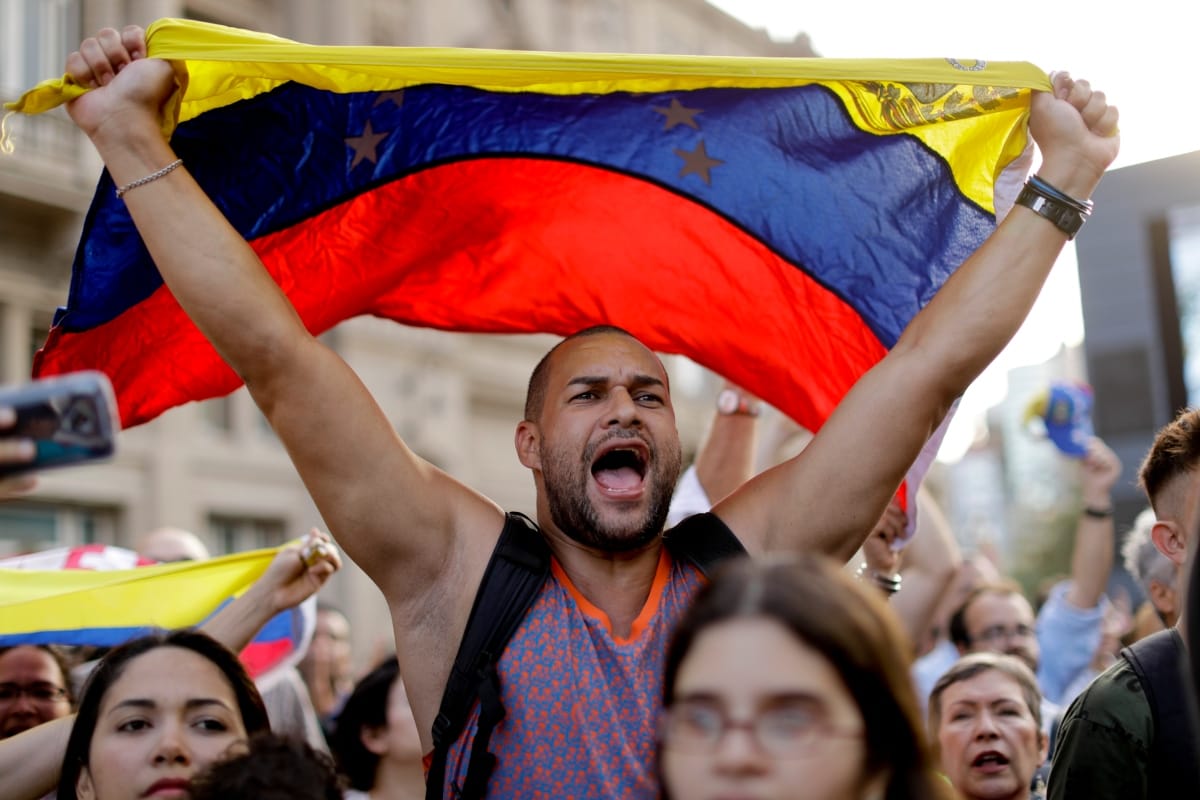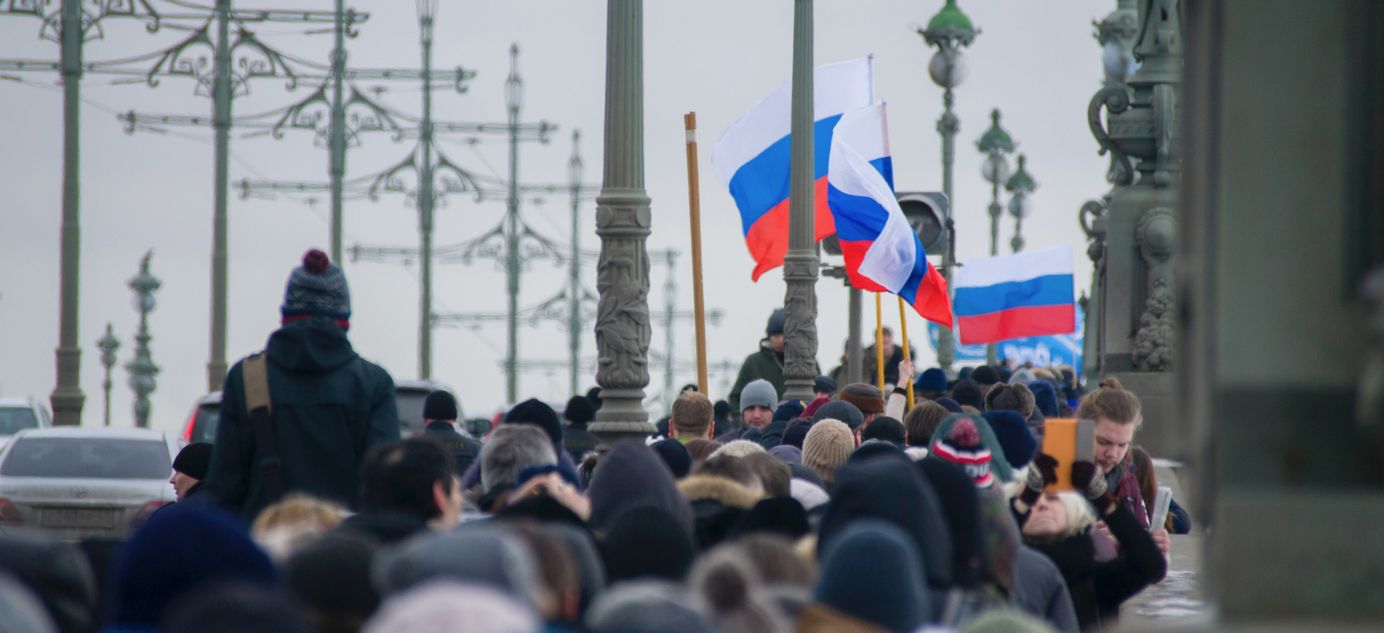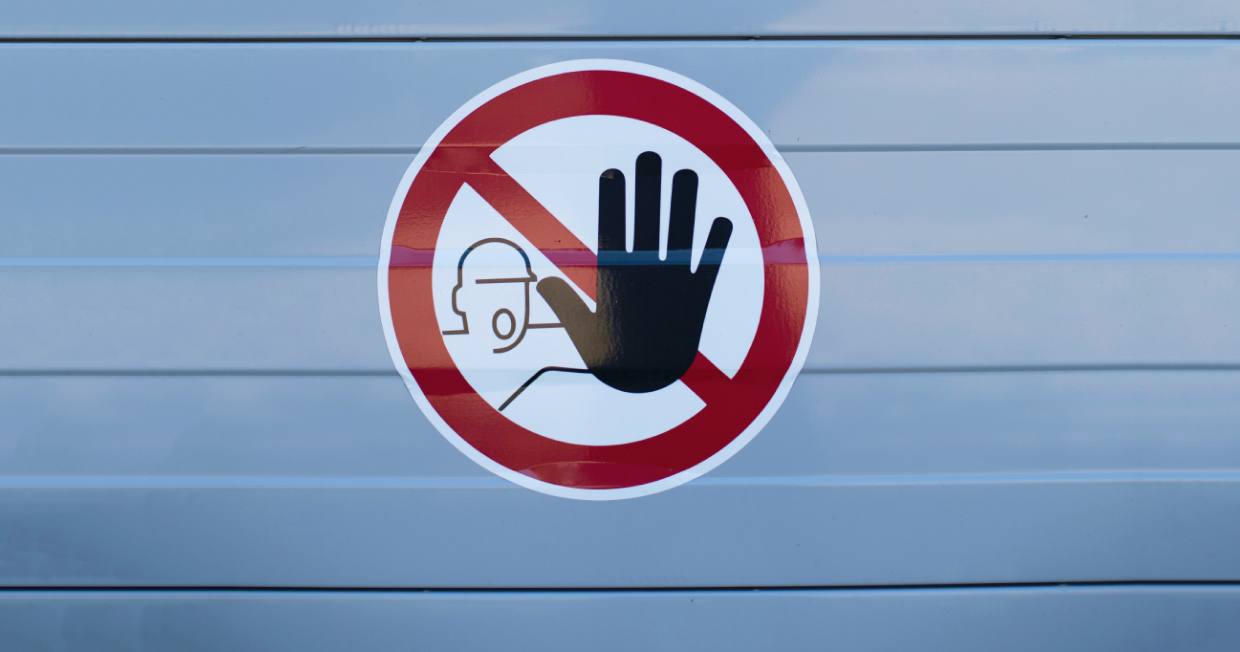
Russia’s toehold of influence in Latin America under threat amid Venezuelan turmoil
Hello! Many are predicting a big geopolitical reversal for Moscow amid possible regime change in Venezuela, so we analyze the extent of Russia-Venezuela ties as our top story this week. But you can also read our deep dive into the world of Belarusian escort Nastya Rybka to try and understand a saga that has oligarchs, sex and election meddling. Our two other stories are about a delay to Durov’s flagship blockchain project TON and highlights of an interview with Soviet-born entrepreneur Hovhannes Avoyan whose app, PicsArt, is wildly popular.

Russia’s toehold of influence in Latin America under threat amid Venezuelan turmoil
Over the last two decades, Russia has spent tens of billions of dollars supporting the regimes of Hugo Chavez and Nicolas Maduro in Venezuela, making the Latin American country Russia’s sole ally in the region. If Maduro’s regime does not survive, Russia will lose twenty years of effort and money, one senior Russian official told The Bell. Moscow’s support for Maduro in the current crisis has not been limited to economic aid: a Reuters report said that Russian mercenaries have been dispatched to Caracas to beef up Maduro’s personal security.
What Russia stands to lose
Over 20 years, the Russian government and state-owned companies have invested no less than $17 billion in Venezuela, mainly in the form of loans and investments. Rosneft was by far the largest Russian investor in the Latin American country.
- Rosneft’s most important Venezuelan investments were loans to the country’s oil company, PDVSA. Since 2016, when Venezuela’s economic crisis began, Rosneft has begun to pre-pay Caracas for oil deliveries. Between 2014 and 2017, Rosneft gave (Rus) the Venezuelan state company $6.5 billion in loans this way. The company invested a total of $8.5 billion in Venezuela. Rosneft is like an “unlucky investor” who continues to hold an asset despite approaching bankruptcy, analysts from investment bank Sberbank CIS wrote at the end of 2017. “If the Maduro regime can hold on, Rosneft, in all likelihood, will continue to be the country’s donor. If the regime falls, Rosneft might lose all,” the analysts predicted.
- The second major Russian business in Venezuela was arms sales — made with the help of Russian loans. Between 2001 and 2013, state company Rosoboronexport loaned Venezuela $11 billion to buy Russian arms. In 2006, Rosoboronexport agreed to invest $474 million in the construction of factories in Venezuela to produce Kalashnikovs.
- These investments didn’t occur without corruption on both sides. The construction of the weapons factories was put on hold due to criminal cases. And one of Russia’s largest banks, Gazprombank, is being investigated over a transfer of $1.2 billion from PDVSA.
What did Russia get in return
Since Vladimir Putin became president in 2000, first Chavez, then Maduro, have been his most frequent guests in Moscow (if you exclude leaders from post-Soviet countries). Chavez came to Russia eight times and, from 2006 until his death in 2013, he visited Moscow every year. Maduro has visited Moscow four times since coming to power just over five years ago.
Putin has only been to Venezuela once. Instead, Sechin has been Russia’s most important link. Since the mid 2000s, Sechin has visited Caracas at least once or twice a year, first as deputy prime minister, and later as CEO of Rosneft.
- In 2008, Venezuela became the only major country to recognize the independence of Abkhazia and South Ossetia after the Russian-Georgian war. Journalist Mikhail Zygar alleged in his book, All the Kremlin’s Men: Inside the Court of Vladimir Putin, that it was Sechin who convinced Chavez to recognize the republics.
- However, Venezuela did not recognize Crimea after Russia’s annexation in 2014.
- Russia began to discuss a military presence in Venezuela in 2016, but talks have not made progress. The only way Russia has used Venezuela to show its military presence was by sending Russian bombers to fly over Caracas (in 2008, 2013 and 2018).
Why the world should care
If confirmed, the presence in Venezuela of Russian mercenaries from Wagner, the private military company allegedly controlled by Putin’s former chef Yevgeny Prigozhin, means Moscow is doubling down on Maduro. While state loans are meant to be honored whatever the regime, it is unsurprising Russia is moving to protect its financial investment — and shore up its only ally in the region, cultivated over many years.
Revelations to come? A deep dive into what Nastya Rybka might know
What happened
Three encounters with billionaire Oleg Deripaska have cost Belarusian escort Nastya Rybka (Anastasia Vashukevich) 9 months in a Thai jail, deportation and, now, criminal charges in Russia. Even though she was freed this week, there is much that is still unclear about her story. The Bell read Rybka’s books and spoke to her friends and relatives to try and answer two of the most important questions: What does Rybka know about Russia’s meddling in the U.S. 2016 presidential elections? And who has tried to access this information?
- From Rybka’s Instagram posts and three books (an unpublished book was seen by The Bell), we can establish that Rybka met Deripaska three times: in August 2016 on a yacht with Deputy Prime Minister Sergei Prikhodko off the coast of Norway; in September-October of the same year at the billionaire’s country house in southern Russia; and in January 2017 at a ski resort in Austria. During her stay at Deripaska’s country house near Krasnodar, Rybka says the billionaire had a private meeting with an important-looking official, which she managed to record by hiding her phone behind books in the library. This recording has never been released and could still be in Rybka’s possession. There is no reason, after all, to suppose she is lying: the other assertions in her books are corroborated by videos and photos on Instagram.
- After her first contact with Deripaska, Rybka and her friends spent 18 months seeking to whip up media interest. They even demonstrated on Red Square with placards advertising Rybka’s books — but they only managed to generate articles in the gutter press. However, this all changed when opposition leader Alexei Navalny published his February 2018 investigation into Deripaska, Prikhodko and Rybka.
- Two weeks later, Rybka, Leslie and eight others were arrested during a sex training class in the Ibis Hotel on Pattaya, a city in east Thailand. “Close to the end of our session, where there were 30 to 40 people, a group of police burst in…. They didn’t explain anything and shouted in Thai and English. They grabbed 10 people, shoved them into the car and drove them away,” recalled one of those arrested, Diana Simuk. At the police station, they were told they had been working illegally. The court hearing a few days later found them innocent, but, as they were leaving, they were again arrested.
- According to friends and relatives, while Rybka and Leslie were in prison, they had a string of visitors from every major secret service in the world: the FBI, CIA and FSB. None of the visitors officially identified themselves, but everyone was interested in Rybka’s information. CNN reported the FBI attempted to get access to the detainees, but were not allowed in. Russian consul Vladimir Pronin was also a frequent visitor. Later, after they were released on time served, Pronin told Rybka everything would be OK. “Pronin practically led us by the hand to the airplane,” the wife of one of those held in the prison told The Bell. On arrival in Moscow, one of the group publicly thanked Pronin.
But how does this — potentially — tie Rybka to U.S. election meddling? An examination of the timeline reveals two important moments:
- Firstly, before Rybka joined Deripaska and Prikhodko on the yacht, Deripaska had been in New York. His time in the U.S. came just before a meeting between Trump’s election campaign manager, Paul Manafort, and his Ukrainian partner, Konstantin Kilimnik, apparently to discuss the possibility of private briefings for Deripaska.
- Secondly, there was a meeting between Deripaska and Rybka in January 2017 in the Austrian ski resort of Lech at which Deripaska was accompanied by Adam Waldman, a lobbyist for Deripaska and Julian Assange. Waldman appears in one of Rybka’s Instagram videos. This encounter took place a few days before one of Waldman’s visits to Wikileaks founder Julian Assange, who was responsible for publishing hacked information from the DNC.
Why the world should care
Few believe we have heard the last of Rybka, not least because she could still have information important for not only Deripaska and senior Russian officials, but even Special Counsel Robert Mueller. Despite her previous hunger for publicity, Rybka has not spoken to any journalists since her release from a Moscow prison earlier this week.
Despite a delay, Durov is on track to launch his cryptocurrency in March
What happened
The founder of Telegram and Vkontakte, Pavel Durov, is preparing to launch TON, his blockchain platform and cryptocurrency, for which he raised $1.7 billion a year ago. A key meeting with major investors should take place within a month, sources told The Bell.
- The timeline for the rollout of TON has shifted, although only by a few months. Durov’s team previously said it would be ready to launch at the beginning of 2019, but this has now — almost certainly — been pushed back by two to three months.
- Two investors in TON, Wimm-Bill-Dann co-founder David Yakobashvili (who committed $10 million) and Qiwi founder Sergey Solonin (who committed $7 million) told The Bell they don’t yet have any news about TON. There was some speculation that Durov would present TON at the World Economic Forum in Davos, and Yakobashvili told The Bell he was hoping to see Durov at the gathering. But Durov did not show up.
- At an upcoming meeting with investors later this month, Durov will present a test version of TON, according to two sources familiar with the plans.
The Bell also examined, TON’s most recent investor newsletter (obtained by the Telegram channel @Tgram), which described the development of TON and its cryptocurrency, Gram:
- TON is 90% complete, and news about the platform will be released in February. TON’s September newsletter said that the platform was 70% complete and that a test version would be launched “later this fall” (another illustration of the shifting timetable).
- The test network, Testnet, will be launched in January (according to information reported by @Tgram, Testnet is already up and running).
- An audit of Testnet (to locate bugs) is scheduled for February.
- A working version of the main platform will be revealed to the public in March.
The ambitiousness of the project is likely the reason for delay. The TON team is studying legal questions across the world as it prepares for the launch and Japan is likely to be the first country to get Gram. But the delays can’t last forever: a key feature of Telegram’s ICO was that, if the blockchain platform is not launched by October 31, investors get their money back.
Why the world should care
More than 100 investors reportedly invested in TON’s ICO, including Russian billionaires like Yuri Milner and Roman Abramovich and Silicon Valley funds such as Kleiner Perkins Caufield & Byers, Benchmark and Sequoia Capital. Durov’s reputation is on the line and he knows it: earlier in January he wrote on his Telegram Channel that: “2019 is going to be by far the most important [year] in our company’s history.”
How to develop an app for teens and conquer the App Store aged 45
What happened
This week, an app with post-Soviet roots, PicsArt, reached the top 5 in the App Store, bypassing Snapchat and Facebook Messenger. The photo-editing app is aimed at teens, has over 100 million users and was designed by the 45-year-old Armenian businessman Hovhannes Avoyan. Valued at more than $250 million, the project got investment from Sequoia, and has model Natalia Vodianova as an ‘Inspiration Manager.’ Avoyan recently sat down for an interview with The Bell founder Liza Osetinskaya. Here are some of the highlights:
From bullying to an app
“One day, I came home and my 10-year-old daughter was in tears. She has been drawing — it seems to me at least — since birth and she posts her drawings on social media, but gets a lot of negative comments. You know how mean the internet can be. At that moment, I was motivated to make a product for people like her. For teenagers, young people, so they can not just be creative, but develop their creative talents. So they can have a community that is positive, kind, beautiful and inspirational.”
From the Armenian diaspora to Sequoia
“We began to develop the app in Yerevan… We were 10-15 people and we slept in the office…
Initially we put our own money into the company. We spent less than half a million dollars and then, in 2014-2015, we went looking for investors. Armenian roots and Armenian connections helped us with Sequoia… Jim Goety, who invested in Instagram, was at one meeting. He said: ‘you know, my daughter really loves your product, can we take a selfie for her?’ And right there, in the middle of the meeting, we took a selfie and he sent it to his daughter. We closed a deal with Sequoia in a week, which was an unheard of timeframe. We were given $15 million to develop the product. At that point we had between 35–40 million active users each month.”
On free celebrity PR
Not many people know Natalia Vodianova as a businesswoman or investor. People know her as a model and a mother of five, and for her charity work. But she also loves websites, start-ups and AI. We met in London and we did several projects with her — for her charity app, Elbi. Then I suggested she become our Inspiration Director. It didn’t cost us much: it is a mutually beneficial partnership.
On selling out
“If I end up face to face with Zuckerberg, it would be good if I said: ‘are you going to buy [PicsArt]?’ And he replies: ‘yes, I want to buy it.’ Then I say: ‘PicsArt isn’t for sale.’”
Peter Mironenko
Translation by Tanja Maier, editing by Howard Amos.
This newsletter is supported by the Investigative Reporting Program at UC Berkeley



